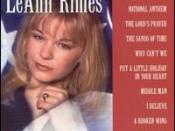"The Waking" by Theodore Roethke
I wake to sleep, and take my waking slow. A
I feel my fate in what I cannot fear. B
I learn by going where I have to go. A
We think by feeling. What is there to know? A
I hear my being dance from ear to ear. B
I wake to sleep, and take my waking slow. A
Of those so close beside me, which are you? A
God bless the Ground! I shall walk softly there, B
And learn by going where I have to go. C
Light takes the Tree; but who can tell us how? A
The lowly worm climbs up a winding stair; B
I wake to sleep, and take my waking slow. C
Great Nature has another thing to do. A
To you and me; so take the lively air, B
And, lovely, learn by going where to go.
C
This shaking keeps me steady. I should know. A
What falls away is always. And is near. B
I wake to sleep, and take my waking slow. A
I learn by going where I have to go. C
This poem by Theodore Roethke contains six stanzas. Each stanza contains three lines (called a tercet), except in the last stanza where there are four lines (called a
quatrain). Poems written like this, including nineteen lines are called villanelles.
The rhyme scheme is not constant. There is not a pattern in the way the rhymes are set up. If you look above, you will see the variations in which the poem rhymes. This is a typical style of modern poetry. Modern poetry is considered anything written from 1920 till
now days. This poem, "The Waking" was written in 1953.
This poem could be taken literally, but I think if you...


